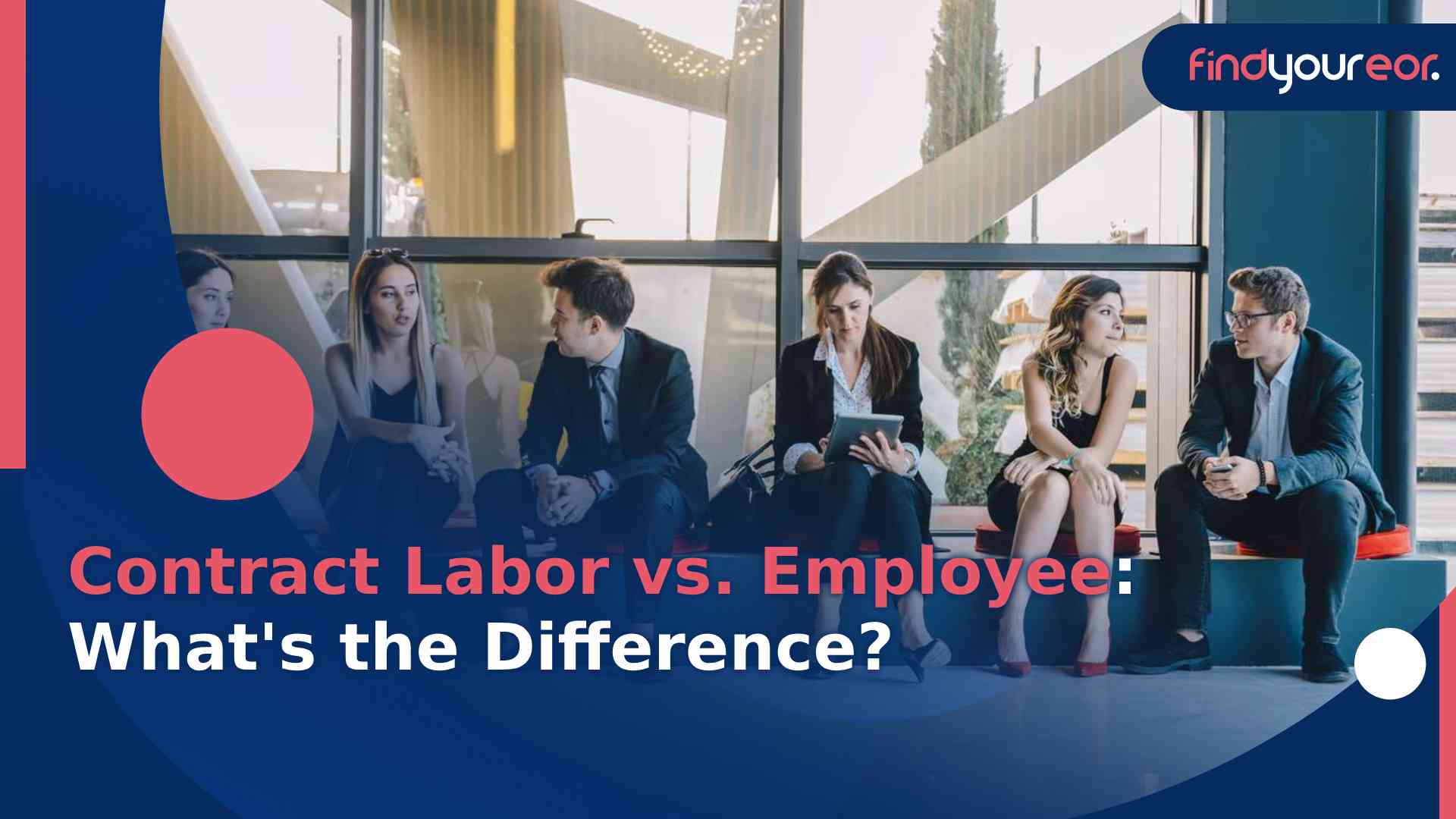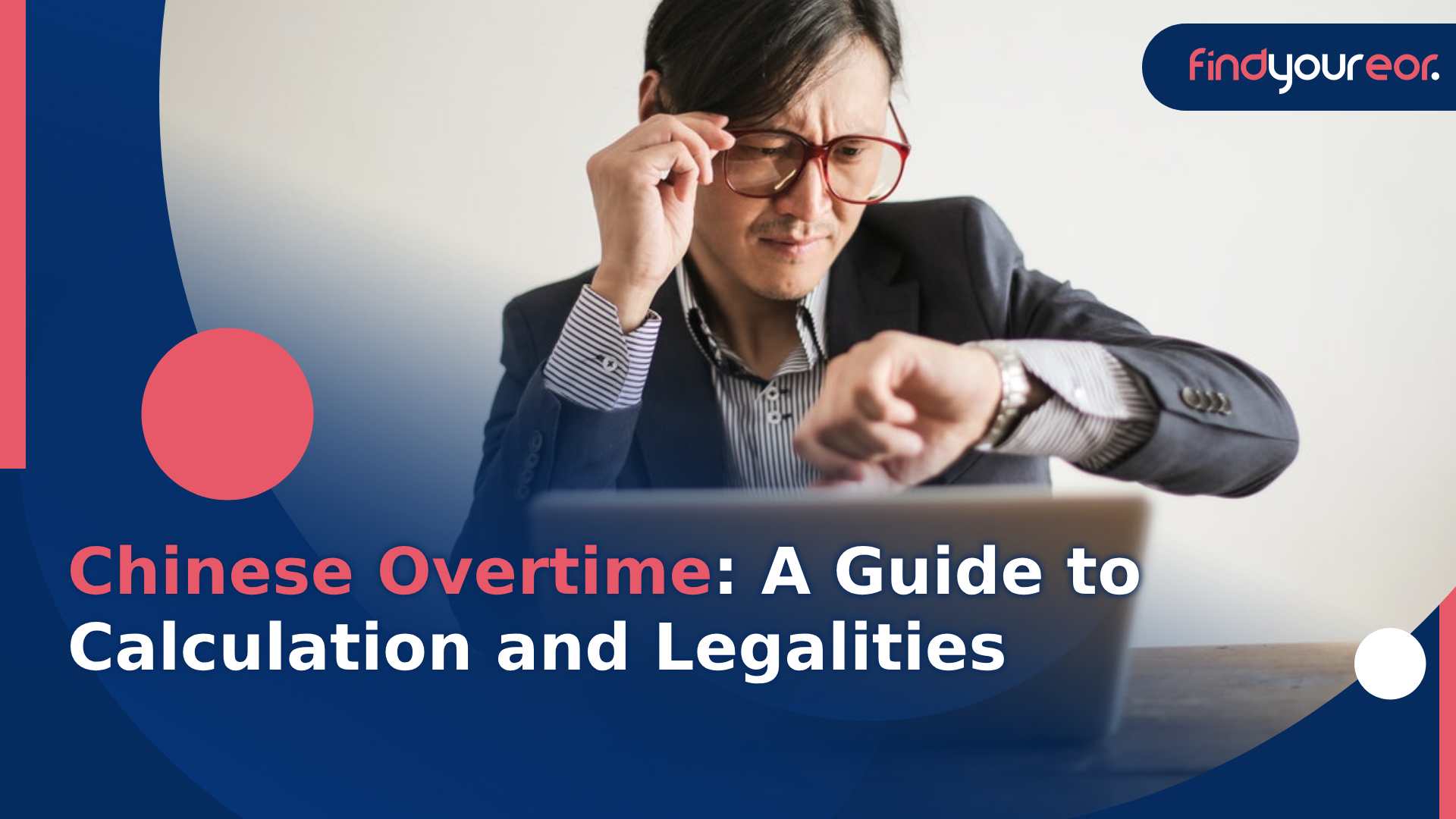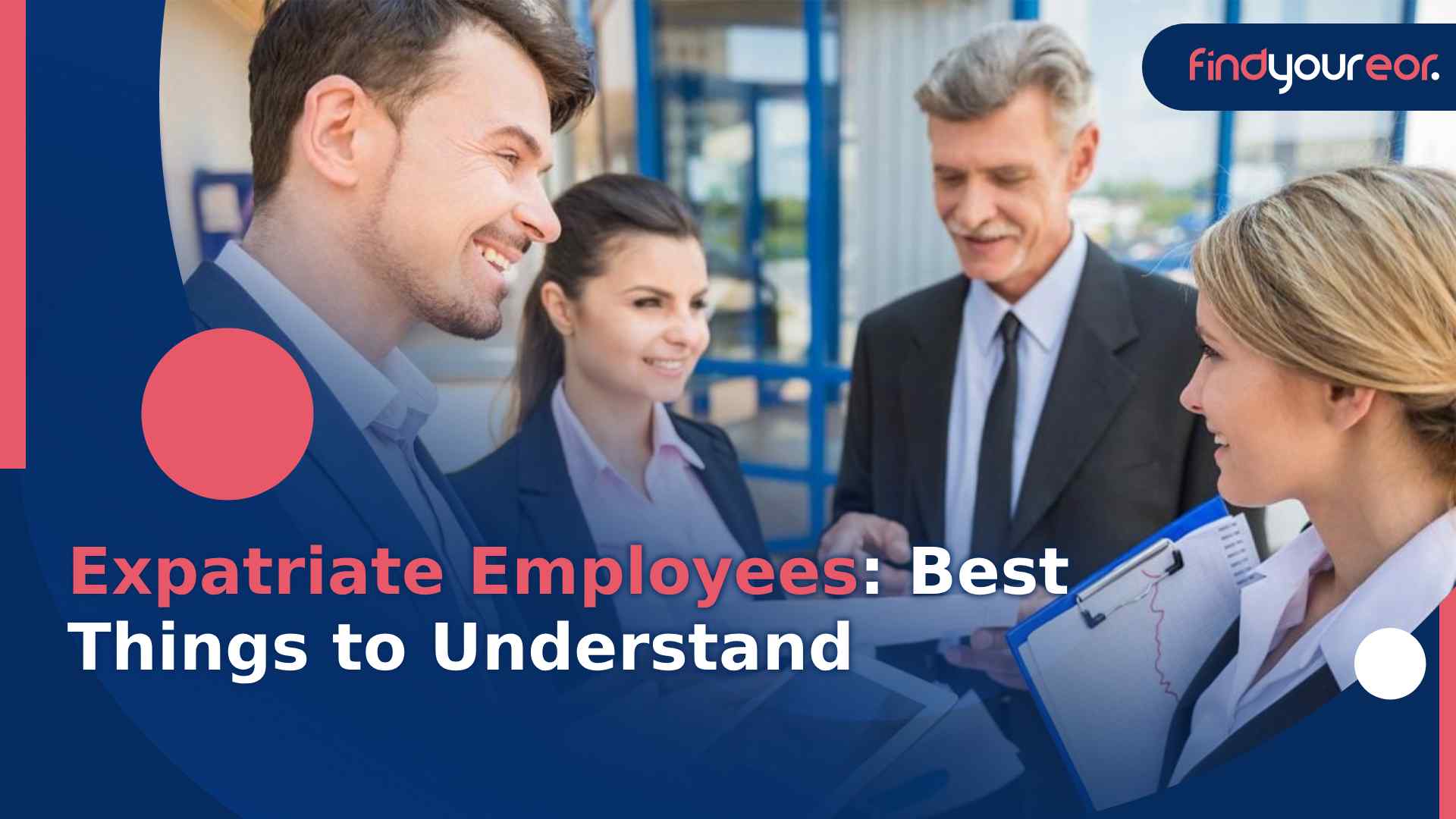PEO vs. EOR: Make the Right Choice for your organization
Last update: September 8th 2023
If you are looking for a way to outsource some of your human resources tasks, such as payroll, benefits, and compliance, you may have come across two options: PEO vs EOR. But what are the differences between them, and which one is better suited for your needs?
In this article, we will explain what PEO vs EOR is. Also, what they offer, and how to choose the best one for your organization.
Understanding PEOs: What Do They Offer?
What is a PEO? PEO stands for Professional Employer Organization. A PEO is a company that provides comprehensive HR services to small and medium-sized businesses. When you partner with a PEO, you enter into a co-employment relationship. That is where the PEO becomes the employer of record for your workers. This means that the PEO takes on some of the legal and administrative responsibilities. Such as, hiring, paying, and managing your staff. The PEO also handles tasks, for example:
· Payroll processing and tax filing
· Benefits administration and enrollment
· Workers' compensation and unemployment insurance
· Compliance with federal, state, and local laws
· Employee training and development
· Performance management and dispute resolution
By outsourcing these functions to a PEO, you can save time and money. Also, you can reduce risks and liabilities, and access better benefits and services for your employees. However, you give up some control over your workforce. As the PEO has the final say on certain decisions affecting your staff. You also have to pay a fee to the PEO, which is usually based on a percentage of your payroll.
Explore EOR: How Does it Work?
EOR stands for Employer of Record. An EOR is a company that acts as the legal employer for your contingent workers. Such as, contractors, freelancers, or temporary staff. When you hire an EOR, you delegate the payroll and compliance aspects of managing your non-permanent workers to them. The EOR takes care of tasks such as:
· Paying wages and taxes
· Issuing invoices and receipts
· Providing benefits and insurance
· Ensuring compliance with employment labor laws and regulations
· Handling contracts and agreements
· Managing visas and work permits
By hiring an EOR, you can simplify the process of hiring and paying your contingent workers. You also avoid legal issues and penalties, and expand your talent pool globally. However, you still retain full control over the selection, supervision, and termination of your workers. You also have to pay a fee to the EOR, which is usually based on a flat rate per worker. However, you need how to choose between employer of record vs PEO.
How to Choose Between PEO and EOR?
The choice between PEO vs EOR depends on several factors, such as:
· The size and nature of your business
· The type and number of workers you need
· The level of control you want to have over your workforce
· The budget and resources you have available
· The goals and objectives you want to achieve
Generally speaking, a PEO is more suitable for small and medium-sized businesses that need full-time employees and want to outsource their entire HR function. A PEO can help them reduce costs, improve efficiency, and access better benefits.
An EOR is more suitable for businesses that need contingent workers and want to retain control over their HR function. An EOR can help them simplify payroll, ensure compliance, and expand globally.
To make the best decision for your organization, you should compare the pros and cons of each option. Also, you need to evaluate your needs and expectations. Finally, you shall consult with an expert who can guide you through the process while choosing EOR vs PEO.
EOR's Advantages Over PEO
One of the main differences between PEO and EOR is the level of control you have over your employees. With a PEO, you enter into a co-employment relationship. This means that the PEO becomes the legal employer of your workers for tax and insurance purposes. You still manage your business day-to-day operations, but the PEO handles the administrative and legal aspects of employment. This can simplify your HR processes. However, it also means that you share the liability and responsibility for your employees with the PEO.
With an EOR, you retain full control over your employees. The EOR acts as a third-party service provider. It takes care of the payroll, taxes, benefits, and compliance for your workers in a specific country or region. You remain the legal employer of your workers. You have the final say over hiring, firing, compensation, and performance management. The EOR does not interfere with your business decisions or culture. However, it does ensure that you comply with the labor law and regulations of the country.
Comparative Structures
Another difference between PEO and EOR is the structure of their contracts and fees. With a PEO, you typically pay a percentage of your total payroll or a flat fee per employee per month. The PEO charges you for the services it provides. For example, payroll processing, tax filing, benefits administration, workers' compensation insurance, and HR support. The PEO also collects and remits the taxes and insurance premiums from your employees' wages.
With an EOR, you usually pay a fixed monthly fee per employee plus the actual cost of payroll, taxes, benefits, and insurance. The EOR invoices you for the services it provides, such as payroll processing, tax filing, benefits administration, and compliance support. The EOR also pays the taxes and insurance premiums on behalf of all your workers and guarantee their employee benefits.
Risk Management
One of the benefits of outsourcing HR functions is that you can reduce your exposure to risk and liability. However, depending on whether you choose a PEO vs EOR, you may have different levels of protection and responsibility.
With a PEO, you share the risk and liability with the PEO as co-employers. This means that both parties are responsible for complying with the employment laws and regulations in the countries or regions where you operate. The PEO can help you avoid fines and penalties for non-compliance, but it can also expose you to lawsuits or claims from your employees or third parties. For example, if an employee sues you for discrimination or harassment, the PEO may also be liable as a joint employer.
With an EOR, you transfer most of the risk and liability to the EOR as a service provider. This means that the EOR is responsible for complying with the employment laws and regulations in the countries or regions where it operates on your behalf. The EOR can shield you from fines and penalties for non-compliance, but it can also protect you from lawsuits or claims from your employees or third parties. For example, if an employee sues you for wrongful termination or breach of contract, the EOR may be able to handle it as the employer of record. That is definitely one of the employee benefits that are contemplated.
Tailored Scalability
Remember when choosing between a PEO vs EOR remember how well they can support your growth and expansion plans. Both options can help you scale up or down your workforce quickly and easily. However, they have different limitations and capabilities.
With a PEO, you can access a large pool of talent across multiple countries or regions. The PEO can help you recruit, hire, onboard, and manage your employees in different markets without having to set up local entities or subsidiaries. However, the PEO may not be able to offer customized solutions for each market or industry. For example, the PEO may not have specific expertise or experience in certain sectors or niches. Also, the PEO may not be able to provide consistent service quality or coverage across all locations.
With an EOR, you can tailor your HR solutions to each country or region where you operate. The EOR can help you adapt to the local culture, language,
and regulations in each market without having to deal with complex legal or administrative issues. However, the EOR may not be able to offer a wide range of talent across multiple markets or industries. For example, the EOR may not have access to qualified or diverse candidates in certain areas or fields. Also, the EOR may not be able to provide competitive or flexible benefits or compensation packages across all locations.
Comparing Scope
The final aspect to compare between a PEO and an EOR is the scope of their services and features. Both options can offer a variety of HR functions, but they may differ in the depth and breadth of their offerings.
With a PEO, you can benefit from a comprehensive and integrated HR solution that covers all aspects of employment. The PEO can offer payroll, taxes, benefits, insurance, compliance, HR support, training, development, and more. The PEO can also leverage its economies of scale and bargaining power to offer lower costs and better rates for its services and features. However, the PEO may not be able to customize or personalize its services and features to your specific needs or preferences. For example, the PEO may not be able to offer unique or innovative benefits or perks that align with your company culture or values.
With an EOR, you can benefit from a flexible and customized HR solution that meets your specific needs and preferences. The EOR can offer payroll, taxes, benefits, insurance, compliance, HR support, and more. The EOR can also adapt its services and features to your company culture and values. However, the EOR may not be able to offer a comprehensive or integrated HR solution that covers all aspects of employment. For example, the EOR may not be able to offer training, development, or other value-added services that enhance your employee engagement or retention.
Cost Analysis
The final factor to consider when choosing between a PEO and an EOR is the cost of their services and features. Both options can help you save time and money by outsourcing your HR functions, but they have different pricing models and structures.
With a PEO, you typically pay a percentage of your total payroll or a flat fee per employee per month. This can make it easy to budget and forecast your HR expenses, but it can also make it difficult to compare the value of different PEOs or negotiate better deals. Also, the PEO may charge you additional fees for extra services or features that are not included in the base price.
With an EOR, you usually pay a fixed monthly fee per employee plus the actual cost of payroll, taxes, benefits, and insurance. This can make it transparent and fair to see what you are paying for each service or feature, but it can also make it challenging to estimate and control your HR expenses. Also,
the EOR may vary its fees depending on the country or region where it operates on your behalf.
Choosing the Optimal Partner
PEOs and EORs both offer outsourced HR solutions, but they differ in the level of control and responsibility they have over your employees. A PEO is a co-employer that shares the legal and administrative aspects of employing your workers with you. A PEO handles payroll, taxes, benefits, compliance, and risk management for your employees. All this while you retain control over their hiring, firing, training, and supervision. A PEO also provides access to a larger pool of benefits and insurance options at lower rates than you could get on your own. This is elemental when seeing the difference between PEO and EOR.
An EOR is a third-party employer that hires your workers on your behalf and assumes full legal and administrative responsibility for them. EOR handles payroll, taxes, benefits, compliance, and risk management for your employees. But it also has control over their hiring, firing, training, and supervision. An EOR operates as a go-between for you and your staff, supplying them with a local contract and ensuring they abide by local rules and regulations. In addition, an EOR offers a narrower pool of benefits and insurance alternatives at higher prices than a PEO.
Considering Workforce Size
One of the main factors to consider when choosing between a PEO and an EOR is the size of your workforce. Generally speaking, PEOs are more suitable for small to medium-sized businesses that have less than 100 employees. PEOs can help these businesses save time and money on HR tasks, access better benefits and insurance plans, and reduce their liability and compliance risks. PEOs can also help these businesses grow by providing them with HR expertise and support.
An EOR is more suitable for large businesses that have more than 100 employees or that operate in multiple countries. EORs can help these businesses expand their global presence by hiring and managing local workers for them. An EOR can also help these businesses comply with the local laws and regulations in each country they operate in. It also reduces their legal and tax risks. EORs can also help these businesses streamline their HR processes. They do this by providing them with a single point of contact for all their employees.
Assessing Company Footprint
Another factor to consider when choosing between a PEO and an EOR is the geographic scope of your company. If your company operates in one or a few states within the US, a PEO might be a better option for you. A PEO can help you navigate the different state laws and regulations regarding employment, taxes, benefits, and more. A PEO can also help you leverage its network of local partners and vendors to provide better service to your employees.
If your company operates in multiple countries or regions outside the US, an EOR might be a better option for you. An EOR can help you hire and manage workers in different countries without having to set up a legal entity or a subsidiary in each location. EORs can also help you comply with the different country laws and regulations regarding benefits or privileges of employment. But also, taxes and more. Finally, an EOR can help you adapt to the different cultural norms and expectations of your employees in each location.
Crafting Your Organizational Strategy
The final factor to consider when choosing between a PEO and an EOR is your long-term vision and goals for your organization. If you want to maintain a high level of control and involvement over your employees, a PEO might be a better option for you. A PEO allows you to keep your company culture and values intact while outsourcing some of the HR functions to a trusted partner. A PEO also allows you to retain ownership of your employee data and records.
If you want to delegate most of the HR functions and responsibilities to a third-party provider, an EOR might be a better option for you. An EOR allows you to focus on your core business activities while letting an expert handle all the HR aspects for your employees. An EOR also allows you to avoid the hassle and cost of setting up and maintaining a legal entity or a subsidiary in each country you operate in.



















